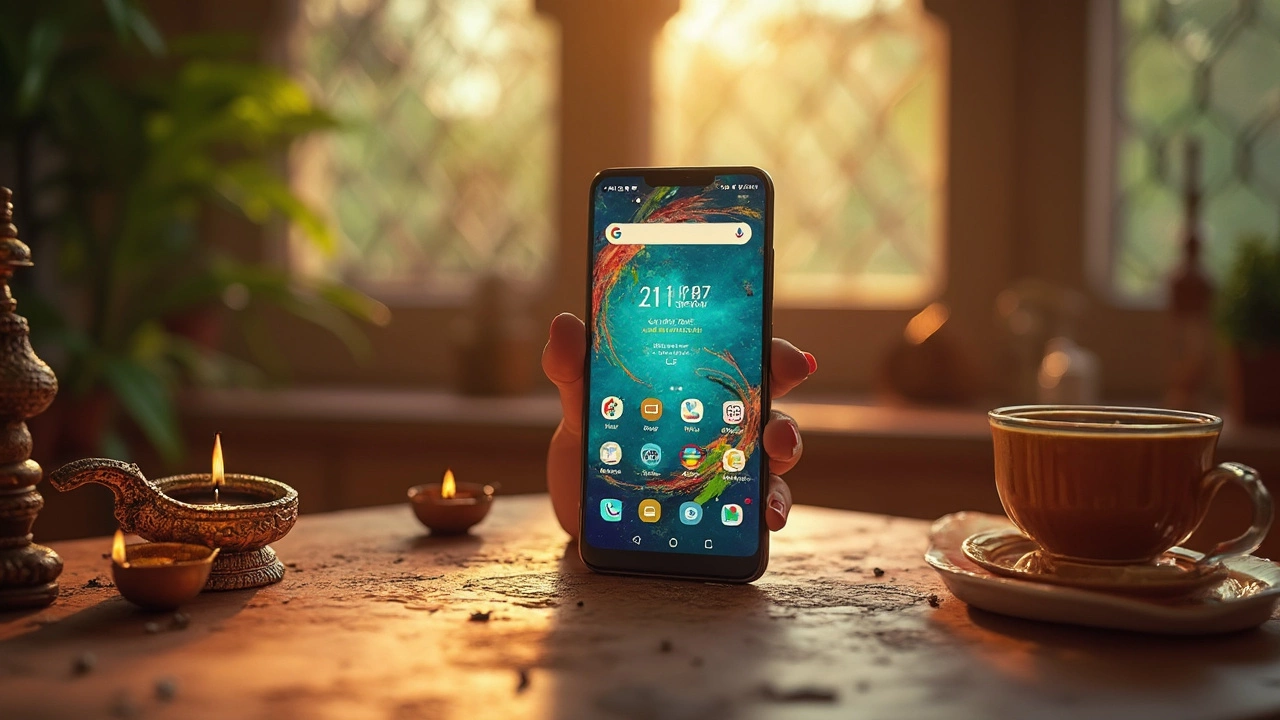10 Hidden Android Settings to Boost Speed and Performance

We’ve all had those moments: you're in the middle of something important, and your trusty Android device decides it needs a breather. Suddenly, apps are sluggish, and the smooth performance you once enjoyed seems like a distant memory. But what if I told you there's more to your settings than meets the eye?
Imagine your Android as a messy room. Sure, it does its job, but with a bit of tidying, it’ll really shine. Hidden within your phone is a treasure trove of settings that can take your device from snail to swoosh. First up, let's look into developer options, a feature tucked away like a secret door that not only developers but you too can open and explore.
To unlock these hidden features, go to 'Settings', tap 'About Phone', and continuously tap 'Build Number' until you've magically attained 'Developer' status. This is the key to mystery settings that can tweak your phone's animations, making everything appear quicker. Think of it like taking a shortcut that's always been there—you just had to know where to look.
Next, imagine your phone's storage like a wardrobe. An overstuffed wardrobe means it's hard to find that sweater you need. Clearing out app caches not only declutters but frees up precious space for better speed and performance. Navigate to 'Settings', then 'Storage', and you'll see a list of all your apps. Tapping on these gives you the option to clear their cache—a bit like donating that sweater you never really liked anyway.
- The Need for Speed
- Secret Sauce of Developer Options
- Clear Up the Clutter
- Smarter Background Processes
The Need for Speed
Have you ever felt like your Android phone is that friend who just can’t keep up during a morning jog? It wasn’t always that way—remember the days when your device was fresh out of the box, galloping like a racehorse? Thankfully, there's a toolkit for that, hidden within your settings, just waiting for you to pop the hood and give your trusty sidekick a tune-up.
Let’s start with understanding why your Android might be slowing down. It's similar to a car carrying excess baggage: unnecessary background apps are the luggage weighing it down, while those forgotten photos and apps are the passenger seats filled to capacity. Clearing that clutter can provide a significant performance boost.
Unloading the Baggage
One quick fix is disabling redundant apps. These apps are like idle passengers—draining power without adding value. Head to 'Settings', select 'Apps', and identify apps you rarely use. Either uninstall or disable them to free up resources. It's as simple as striking their names off the list. This simple task can instantly boost speed.
Tweak the Throttle
Animations can make your device look slick, but they also draw on power like a light show at a concert. Speed up your device by adjusting these settings:
- Go to 'Developer Options' (remember the secret sauce?).
- Scroll to 'Window Animation Scale', 'Transition Animation Scale', and 'Animator Duration Scale'.
- Change each of these settings from 1x to 0.5x. This halves the time animations take, making transitions snappier.
This little trick can feel like switching your car from a granny-mode cruise to turbo-speed with just a flick of a switch.
With these steps, you’re not only enhancing performance but extending the lifespan of your Android device. Smartphones, like seasoned athletes, just need a good conditioning plan, and soon they'll be racing through tasks like they just got an upgrade.
Secret Sauce of Developer Options
Remember the feeling of discovering a hidden compartment in a desk drawer as a kid? That's what unlocking your Android's Developer Options feels like. It's like finding the secret stash of tools that optimize your phone from within.
To unleash these powerful options, you don't need to be a tech whiz or wear a lab coat. Just head over to 'Settings', scroll down to 'About Phone', and tap 'Build Number' repeatedly—think of it like knocking on the door of a secret club until they're impressed with your persistence. After the seventh tap, congrats, you're now a developer! Well, sort of.
Why Bother with Developer Options?
Think of Developer Options as the mechanical panel in a high-performance car. Sure, it works fine without constant adjustments, but tweaking just the right dial can turn a smooth ride into a thrilling one. Here's why it's worth diving in:
- Animation Scale Tweak: Under Developer Options, you’ll find settings like 'Window Animation Scale', 'Transition Animation Scale', and 'Animator Duration Scale'. Lowering these values to 0.5x or even turning them off makes your phone feel snappier, as it accelerates the transitions between screens, giving an impression that your Android's on turbo mode.
- Force GPU Rendering: This option can enhance app visuals by using your device’s powerful GPU for 2D rendering, freeing up the CPU for other tasks. It's like hiring a new assistant to lighten the load, making multitasking smoother.
- Limit Background Processes: Sometimes, apps hanging out in the background are like uninvited guests, gobbling up RAM. Limiting background processes to a few keeps your Android lean and nimble, preserving system resources for active tasks.
If you’re worried about messing things up, fear not. These changes are easily reversible. Plus, adjusting these small settings can lead to a noticeable boost in performance, sort of like giving your phone caffeine without the jitters.
| Feature | Old Setting | Improved Setting |
|---|---|---|
| Window Animation Scale | 1x | 0.5x |
| Transition Animation Scale | 1x | 0.5x |
| Animator Duration Scale | 1x | 0.5x |
| Background Processes Limit | Standard Limit | 2 processes |
So, don’t shy away from exploring Developer Options. It’s your ticket to understanding and improving the inner workings of your Android device. Armed with this knowledge, you’ll find that boosting speed and performance is just a few taps away.

Clear Up the Clutter
Picture this: your Android device is like an overstuffed closet. You've got clothes everywhere, old gadgets, maybe some forgotten snacks... no wonder it's getting a bit clogged, right? The same thing happens with your phone. When it's cluttered with unnecessary files and data, its performance takes a hit.
So, how do we tidy up? Let's first tackle app caches. These are like breadcrumbs left by your apps – helpful at first for quick loading but eventually adding up to a crumby mess. Here's how to clear them out:
- Go to your phone's Settings.
- Look for Storage and tap on it.
- Select Cached Data.
- Hit Clear Cache to wipe it clean.
Think of this as your phone's version of a spring cleaning. It doesn't delete your personal data, just those little pieces apps stash away.
Uninstall Unused Apps
Next, let's deal with those digital dust collectors—old apps you're not using anymore. These are the forgotten shoes or old tech gadgets lurking in the corner. Here's the easy way to declutter:
- Open your device's Settings and go to Apps.
- Review the list and identify apps you rarely or never use.
- Tap the app and select Uninstall.
By clearing out these forgotten apps, you’re not only freeing up storage but also boosting overall Android performance.
Organizing for Efficiency
Finally, let's do a bit of organizing. Think of your home screen as prime real estate – only the essentials should be there. Move less important apps into folders or pages out of view. This creates a distraction-free zone that can improve how you navigate and enjoy your phone.
| Category | Storage Saved |
|---|---|
| Clearing Cache | ~500 MB/month |
| Uninstalling Unused Apps | ~1 GB |
| Organizing Home Screen | Improves user experience |
By clearing up the clutter, you’re not just tidying your phone; you’re making space for smoother, faster operations—and who doesn’t want that?
Smarter Background Processes
Ever wonder why your phone's performance drops even when you're not doing anything? It's like a tiny city where processes never sleep. Apps you don't even remember opening are still running, sipping away your phone’s juice like a midnight snack thief.
What's going on here? Well, think of your phone's background processes as a cast of extras in a movie—unseen but always there. They hum away, doing small tasks like updating widgets or syncing emails. But too many of them, and suddenly your phone's speed hits gridlock.
Want to take control? Here’s how:
- Head to Settings: Start by visiting your phone's 'Settings'.
- Access Developer Options: Navigate into 'Developer Options'. If it’s your first time, you might need to unlock it, as mentioned earlier.
- Limit Background Processes: Look for an option called 'Background process limit'. You can cap the number of app processes running simultaneously. Try setting it to around 2-3 for optimal performance.
This is like having a bouncer at a club, making sure only a select few can join the party. Fewer background apps mean more RAM available, ensuring the apps you actively use perform better.
Why It Works
By limiting background processes, you free up resources, allowing apps you're using to access more RAM and processor power. It's a simple tweak, but just like decluttering, it brings efficiency and order back into play.
But don't take my word for it. According to user reports, tweaking these settings can improve speed by up to 30% on older devices. Neat, right?
If you're using an Android version with adaptive features, consider enabling battery optimization as well. This helps optimize phone energy usage, nudging those stubborn apps to take a nap when they're not needed.
By cleaning up your phone's background, you’re essentially laying down a smoother track for its software, ensuring it runs not just faster but longer too.
